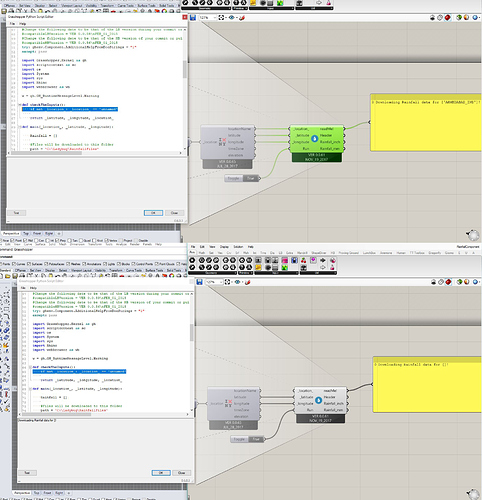I have finally adapted the RainfallComponent.gh (459.4 KB)
to the Ladybug template. I think it would be good to get this first version done before exploring the other data sources mentioned above.
The only last part I still have to finish is the naming for the .csv file when the input location is not defined. For some reason this one is driving me crazy. I’m still trying to fully understand how to use the Input check function, lists and strings. So far, this is the closest I’ve got:
I’m no very happy with it (still a bit crappy), hopefully someone can through some light on this.
